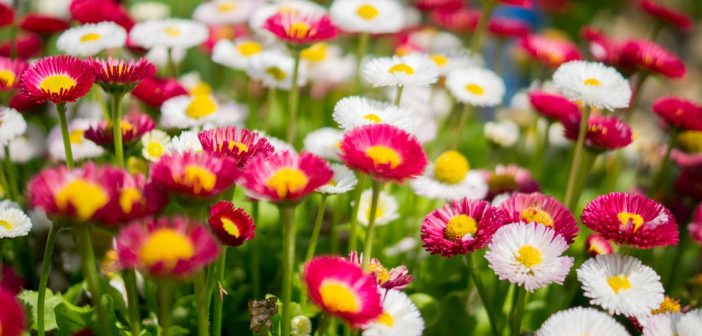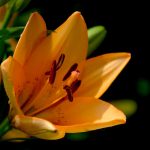If you’re like most people who have a bit of property, you’d love to have a garden, but you might not want to engage in back-breaking toil to have one. You probably dream of tossing a handful of seeds onto the ground, watering them a little, then watching them grow into healthy plants with gorgeous flowers with not much care. Some plants are actually almost that easy. They do not particularly care about the type of soil, don’t need a lot of water or fertilizing, and do well in sun or shade. Here are some beautiful plants that are low maintenance:
Daylily
The daylily, with its sensational, multicolored, trumpet-shaped flowers that come in all colors save blue and white, gives maximum pleasure with minimum care. Their leaves, which are long, thin and curved like grass, are attractive even when there are no flowers and crowd out weeds. They get their name because the flower only lasts a day, but stems, or scapes of the daylily have numerous buds that bloom at different times. There’s a daylily for every purpose in the garden. There are daylilies that grow only four inches tall and others that grow to four feet.

Daylilies should be planted in the spring or fall and though they do well in shade, they’ll bring forth fewer blossoms than they would in full sunlight. They are not fussy about soil and in fact do better if the soil is not too rich.
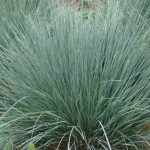
Blue Oat Grass
Ideal for rock gardens or borders, this grass grows in two to three foot tall clumps of stiff blue blades. The color contrasts nicely with the more common colors found in the garden. Blue oat grass easily grows in many types of soil, even soil that’s dry and poor, though it does need good air circulation.
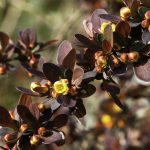
Barberry
This is a shrub that can grow between four and 10 feet tall and is prized for its yellow to red foliage and blue-black berries that appear in summer and last until fall. Unlike a lot of shrubs, it does not really need pruning. Barberry bushes can flourish in most types of soil as long as it drains well. It does not like “wet feet.” It is also a good shrub to plant in an urban setting, for it’s tolerant of pollution. To get the best foliage color, plant barberry in full sun.
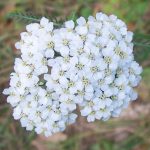
Yarrow
This perennial grows from one to three feet tall and produces yellow to red to hot pink flowers in the summer. It is famously drought-tolerant and does well in poor soil. It can stand a lot of neglect and indeed, grows weak and doesn’t produce as many flowers if it’s given too much pampering. Yarrow is a good plant to grow in a sunny meadow garden or border.
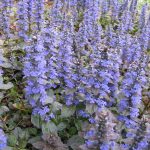
Ajuga
Also called bugleweed, this plant like well-drained, somewhat acidic soil. It does not care whether the soil is dry or moist. It produces masses of beautiful blue to violet-blue flowers and serves as a ground cover in shady areas where grass won’t grow. One type, Ajuga reptans, can become invasive and may need to be cut back.
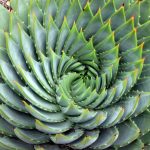
Aloe
This succulent plant is ideal for climates that are hot and dry. The leaves grow in attractive rosettes, and some varieties produce interesting flowers. It can be used in a rock garden or as a ground cover, depending on the variety. Aloe does well in full sun and can tolerate the salt wind of the seaside, drought and infertile soil. Too much watering causes its roots to rot, though it needs a deep watering from time to time. That is just about the only care this plant needs once it’s established.
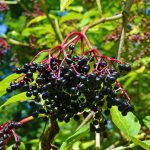
Chokeberry
This is another shrub that can grow from 6 to 10 feet tall and is prized for its profusion of ruby red berries that appear in the fall and cling to the branches throughout the winter. The berries are eaten by birds. The shrub does not mind being transplanted and is tolerant of any type of soil, but it bears more fruit and the fall foliage is more intense if it’s in full sun.
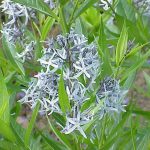
Amsonia
Amsonia, or bluestar produces blue, star-shaped flowers in late spring and early summer, and the leaves are attractive even when the flowers have faded. It grows from two to three feet high and can thrive in poor to somewhat fertile soil. Soil that is too rich causes the plant to weaken.
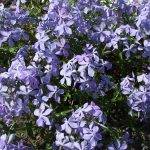
Wild Lilac
This is a surprisingly tough shrub that is native to the western coastline. It can be used as a screen or placed on dry slopes that get lots of sun. Wild lilac can bear up under drought and wind, and doesn’t like to be overwatered. It should be planted in the fall and watered only after the soil has completely dried out. Once wild lilac is established, it hardly needs to be watered at all.
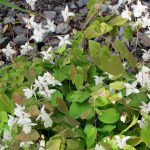
Barrenwort
This plant, grown for its heart-shaped, bi-colored foliage and red, yellow, pink or white flowers, grows in clumps and does not become invasive. It is easily divided and can be left on its own for a very long time.
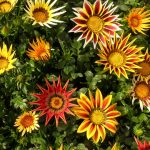
Gazania
These plants have flowers that resemble daisies and come in shades of yellow, orange, lavender, pink and white. They bloom in early spring and early summer, but in warm climates the flowers appear throughout the year. Gazania does do best in well-drained soil and full sun, but also does well in poor soil and in salty coastal air. It tolerates drought.


